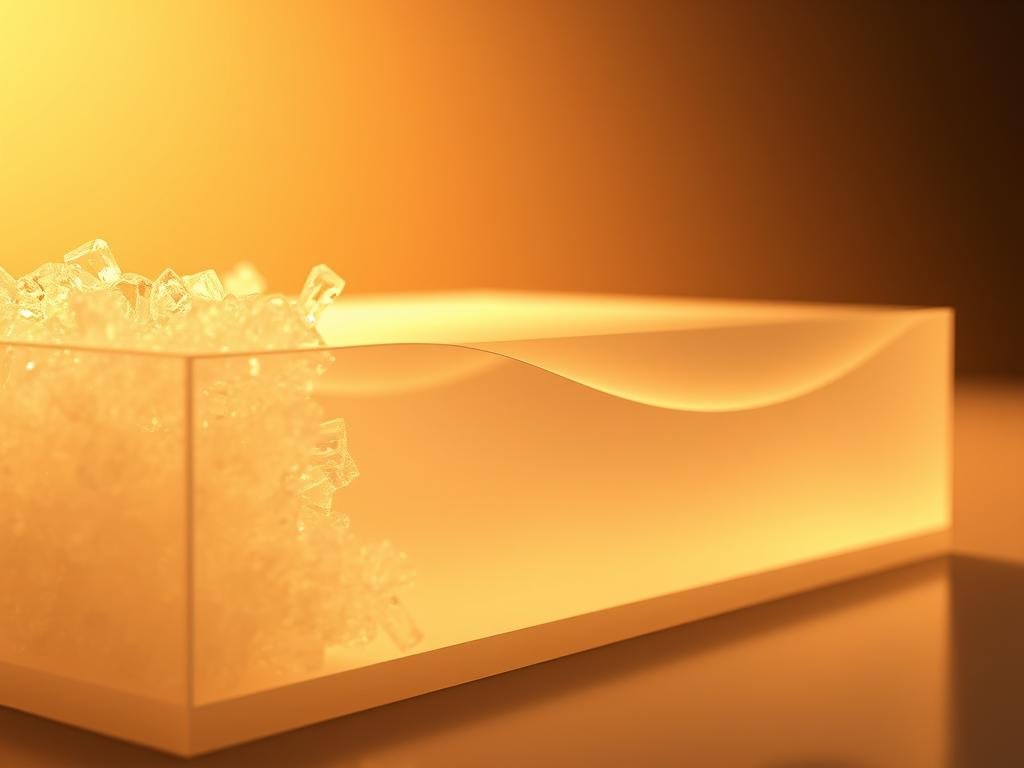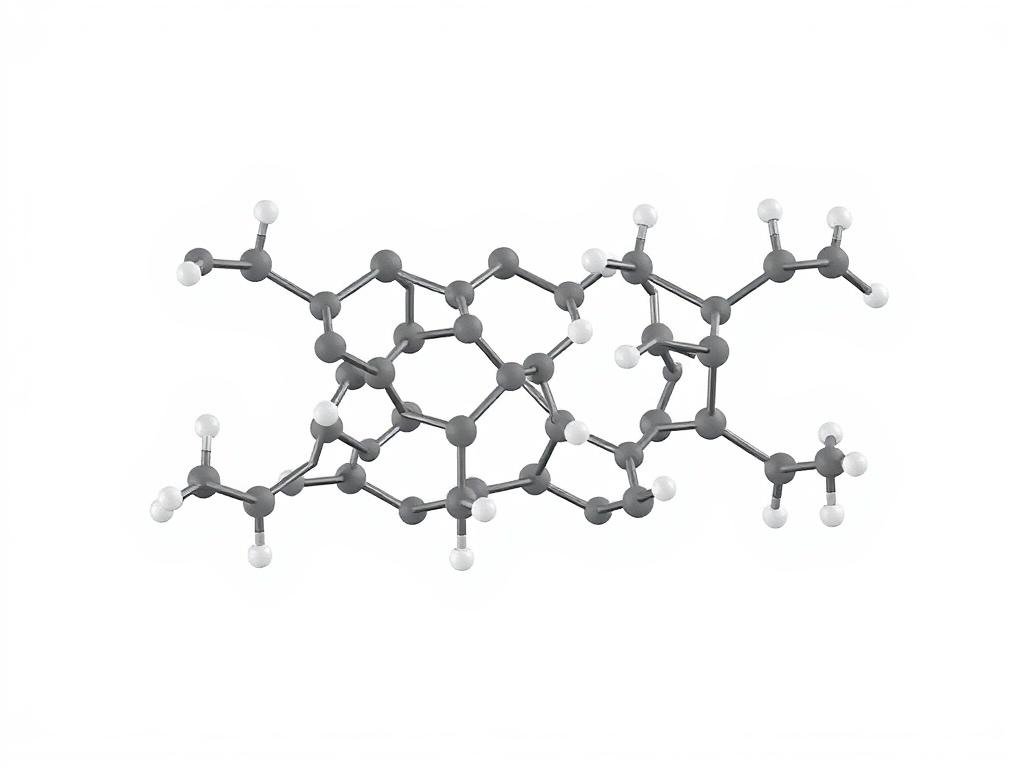塑膠 materials are ubiquitous in modern life, and among them, polyethylene stands out due to its versatility and wide range of 塑膠 屬性.
The 塑膠 industry relies heavily on polyethylene for various 應用程式, largely due to its 密度, which determines its performance characteristics.
Understanding the spectrum of 塑膠 types, from low-密度 to high-密度 materials, is crucial for selecting the right material for specific uses. As a critical property, 密度 differentiates between various grades of 塑膠 that may appear similar but have distinct functionalities.
This guide will explore the fundamental concepts of 密度 以及它的影響 塑膠 materials, providing insights into the diverse world of polyethylene and its numerous 應用程式.
Understanding Polyethylene Density Fundamentals
Understanding the fundamentals of polyethylene density is essential for selecting the right material for specific uses. Polyethylene, a versatile plastic polymer, is widely used across various industries due to its unique properties.
What Is Polyethylene and Why Density Matters
Polyethylene is defined as a synthetic resin made from the polymerization of ethylene, with a basic chemical structure consisting of a carbon backbone and attached hydrogen atoms. The density of polyethylene, measured in g/cm³, is a critical factor in classifying different types of polyethylene. This density variation stems from differences in crystallization structure that forms during the polymerization of ethene.
The density of polyethylene directly influences its material properties, including strength, flexibility, chemical resistance, and processability. For instance, seemingly small differences in density values can significantly alter material performance, making density a crucial factor in material selection.
How Polyethylene Density Is Measured
The measurement of polyethylene density is typically conducted using standard testing procedures employed by the plastic industry. These procedures involve determining the mass per unit volume of the material, expressed in g/cm³. Understanding how to measure density accurately is vital for ensuring the quality and performance of polyethylene materials in various applications.
Industry standards dictate that the density of polyethylene is measured using precise methods to classify different grades of polyethylene accurately. This classification is essential for selecting the appropriate material for specific applications, ensuring that the material performs as required.
The Polyethylene Density Spectrum
Exploring the polyethylene density spectrum reveals the diverse properties and potential applications of this versatile plastic. The density of polyethylene is a critical factor that determines its characteristics, ranging from ultra-low-density materials at 0.857 g/cm³ to high-density materials at 0.975 g/cm³.
Density Range Overview
The polyethylene density spectrum is characterized by a broad range of densities, from ultra-low-density to high-density polyethylene. This range allows for the customization of polyethylene for various applications, depending on the required properties. The density range is a result of variations in the molecular structure, particularly in the branching of polymer chains.

Crystallization Structure and Its Impact on Density
The crystallization structure of polyethylene significantly influences its density. Linear polyethylene chains can pack more tightly, resulting in higher density and improved mechanical properties. In contrast, branched polyethylene chains are less densely packed, leading to lower density and different performance characteristics. The degree of crystallinity correlates with density and affects properties such as transparency, stiffness, and barrier properties.
The Relationship Between Density and Molecular Weight
Density and molecular weight are independent variables in polyethylene that can be manipulated separately to achieve desired properties. While density is influenced by the packing of polymer chains, molecular weight affects the material’s strength and resistance to deformation. Understanding the relationship between these properties is crucial for optimizing polyethylene for specific applications.
Low-Density Polyethylene (LDPE)
LDPE is characterized by its low density and highly branched molecular structure, making it suitable for a multitude of applications. Its density ranges from 0.910 to 0.940 g/cm³, a result of its unique manufacturing process.
Density Range and Molecular Structure
The manufacturing process of LDPE involves high pressures (up to 350 megapascals) and high temperatures (up to 350°C) in the presence of oxide initiators. This process results in a polymer with both long and short branches, preventing the polyethylene molecules from packing closely together. Consequently, LDPE exhibits a lower density compared to other types of polyethylene.
- Density range: 0.910 to 0.940 g/cm³
- Highly branched molecular structure due to the manufacturing process
- Lower density resulting from the branching of polymer chains
主要屬性與特徵
LDPE is known for its flexibility, chemical resistance, and electrical insulation properties. Its relatively low melting point of approximately 110°C (230°F) makes it easy to process. These characteristics make LDPE a versatile material for various applications.
- 彈性與耐用性
- Chemical resistance
- 電氣絕緣性能
- Low melting point
常見應用與用途
LDPE is widely used in packaging films, trash and grocery bags, agricultural mulch, wire and cable insulation, squeeze bottles, toys, and household items. Its flexibility and resistance to chemicals make it an ideal material for these applications. Additionally, LDPE products are labeled with the plastic recycling code #4, indicating their recyclability.
- Packaging films and bags
- Agricultural and industrial applications
- Household items and toys
- Recyclable with code #4
High-Density Polyethylene (HDPE)
With its density being 0.941 g/cm³ and above, HDPE stands out among other polyethylene types due to its unique molecular structure and properties. This characteristic density is a result of its manufacturing process, which involves low temperatures and pressures, and the use of specific catalysts.
Density and Molecular Structure
HDPE is characterized by its linear molecular structure, which has minimal branching. This allows the polymer chains to pack closely together, resulting in a dense, highly crystalline material. The density of HDPE is greater than or equal to 0.941 g/cm³, distinguishing it from lower-density polyethylene variants.

Key Properties and Performance
HDPE exhibits high strength, moderate stiffness, and excellent temperature resistance, with a melting point more than 20 °C higher than LDPE. It can withstand repeated exposure to 120 °C, making it suitable for applications requiring sterilization. Its chemical resistance is also notable, contributing to its widespread use in various industries.
主要應用與產業用途
HDPE is utilized in a broad range of applications, including blow-molded bottles for milk and household cleaners, blow-extruded grocery bags and construction film, and injection-molded products such as pails, caps, and appliance housings. Its recyclability, denoted by the plastic recycling code #2, adds to its appeal in sustainable plastic applications.
| Property | HDPE 特性 |
|---|---|
| 密度 | ≥ 0.941 g/cm³ |
| 分子結構 | 線性,最小分支 |
| 耐溫性 | 最高至 120 °C |
| 可回收性 | 回收代碼 #2 |
其他聚乙烯類型按密度
除了常見的 HDPE 和 LDPE 之外,還存在其他重要的聚乙烯類型,這些類型是根據其密度和分子結構來定義的。這些變體提供了多樣的性能,以滿足不同產業的需求。
中密度聚乙烯 (MDPE)
Medium-Density Polyethylene (MDPE) is characterized by its density range of 0.926-0.940 g/cm³, positioning it between LDPE and HDPE in the density spectrum. This intermediate density gives MDPE a balance of properties, making it suitable for applications such as gas pipes and fittings, where it offers a good compromise between flexibility and strength.
Linear Low-Density Polyethylene (LLDPE)
Linear Low-Density Polyethylene (LLDPE) has a density range of 0.915-0.925 g/cm³. It is produced through the copolymerization of ethylene with alpha-olefins using Ziegler-Natta or metallocene catalysts. LLDPE’s unique structure, featuring a linear backbone with short, uniform branches, prevents the polymer chains from packing closely together, resulting in high flexibility and resistance to puncture. These properties make LLDPE ideal for film applications, liners, and other packaging uses.
Ultra-High-Molecular-Weight Polyethylene (UHMWPE)
Ultra-High-Molecular-Weight Polyethylene (UHMWPE) is a specialized type of polyethylene with molecular weights ranging from 3 to 6 million atomic units. This high molecular weight imparts exceptional strength, wear resistance, and a high strength-to-weight ratio to UHMWPE. It is used in high-performance applications, including medical implants, bulletproof vests, and industrial components, where its outstanding properties can be fully utilized.
The diverse properties of MDPE, LLDPE, and UHMWPE highlight the versatility of polyethylene as a material. By understanding the specific characteristics and applications of these types, manufacturers can select the most appropriate polyethylene for their needs, ensuring optimal performance and efficiency.
How Density Affects Polyethylene Performance
The performance of polyethylene is intricately linked to its density, impacting its mechanical properties and processing requirements. As density varies, so do the material’s strength, flexibility, and resistance to environmental factors.
Impact on Mechanical Properties
Increasing polyethylene density directly correlates with higher stiffness, tensile strength, and hardness. However, this increase in density inversely affects impact resistance and flexibility. For instance, a higher-density polyethylene part would be much stronger and stiffer but more likely to fail an impact test, particularly at low temperatures.
The relationship between density and mechanical properties is crucial for determining the suitability of polyethylene for specific applications. Creep resistance is improved by increasing either density or molecular weight, while toughness is enhanced by increasing molecular weight or decreasing density.
Thermal and Chemical Resistance Variations
Density also influences the thermal and chemical resistance of polyethylene. Higher density materials generally offer better resistance to gas and moisture permeation, making them suitable for applications requiring barrier properties. Additionally, higher density polyethylenes have higher melting points and heat resistance, expanding their use in high-temperature applications.
Chemical resistance varies across the density spectrum, with high-density polyethylene typically offering better resistance to certain chemicals compared to low-density polyethylene.
| Density Range | Chemical Resistance | 熱阻 |
|---|---|---|
| 低密度 | Lower resistance to chemicals | Lower melting point |
| High Density | Higher resistance to chemicals | Higher melting point |
Processing Considerations Across Density Ranges
Processing considerations for polyethylene vary significantly across different density ranges. Melt temperature requirements, pressure needs, cooling rates, and shrinkage expectations all change with density. For example, higher density polyethylenes typically require higher melt temperatures and pressures during processing.
Understanding these processing considerations is crucial for optimizing the manufacturing process and achieving the desired material properties.
Selecting the Right Polyethylene Density for Your Application
The density of polyethylene is a key property that affects the performance and functionality of plastic products in diverse applications. Selecting the correct grade from the thousands of commercial options requires a thorough understanding of the interaction between material properties.
Balancing Performance Requirements
在選擇聚乙烯密度時,平衡競爭的性能需求至關重要。例如,增加密度通常會提升強度和剛性,但可能會影響柔韌性和抗衝擊性。需要一個全面的框架來平衡這些取捨,考慮如強度與柔韌性、化學抗性與加工性等因素。
Industry-Specific Selection Criteria
Different industries have unique requirements for polyethylene density. For example, the packaging industry often prioritizes flexibility and impact resistance, while the construction industry may emphasize strength and durability. Understanding these industry-specific criteria is vital for selecting the optimal polyethylene density.
| 產業 | Key Requirements | Preferred Density Range |
|---|---|---|
| 包裝 | 彈性,抗衝擊 | 0.910 – 0.925 克/立方公分 |
| 施工 | 強度,耐久性 | 0.935 – 0.965 g/cm³ |
常見的選擇錯誤避免
在選擇聚乙烯密度時常見的錯誤包括在不必要時過度規定密度、未考慮完整的操作環境,以及忽略加工的影響。了解這些潛在的陷阱可以幫助確保為特定應用選擇最合適的聚乙烯密度。
結論:聚乙烯密度創新的未來
聚乙烯密度的創新正處於一場革命的邊緣,受到新興技術和可持續性需求的推動。聚乙烯密度在決定材料性能方面的重要性,在本指南中一直是反覆強調的主題。
新興創新在 聚乙烯技術,包括新的催化劑系統,正使得密度控制更加精確。這一進展在開發可持續性方面具有關鍵作用 塑膠 解決方案,例如生物基 polyethylene 具有受控密度輪廓。
朝向可持續解決方案的趨勢,配合先進的製造技術,實現新的應用。 HDPE 以及其他密度範圍內的聚乙烯類型。未來的研究方向在 聚合物 科學很可能會專注於開發具有更佳性能特徵的新型共聚物。
作為 產業 持續演變, 回收 考量將在未來扮演越來越重要的角色 polyethylene 開發。密度對可回收性的影響將是一個關鍵的焦點領域。保持對這些創新和與密度相關的發展的了解,對行業專業人士來說將是至關重要的。
